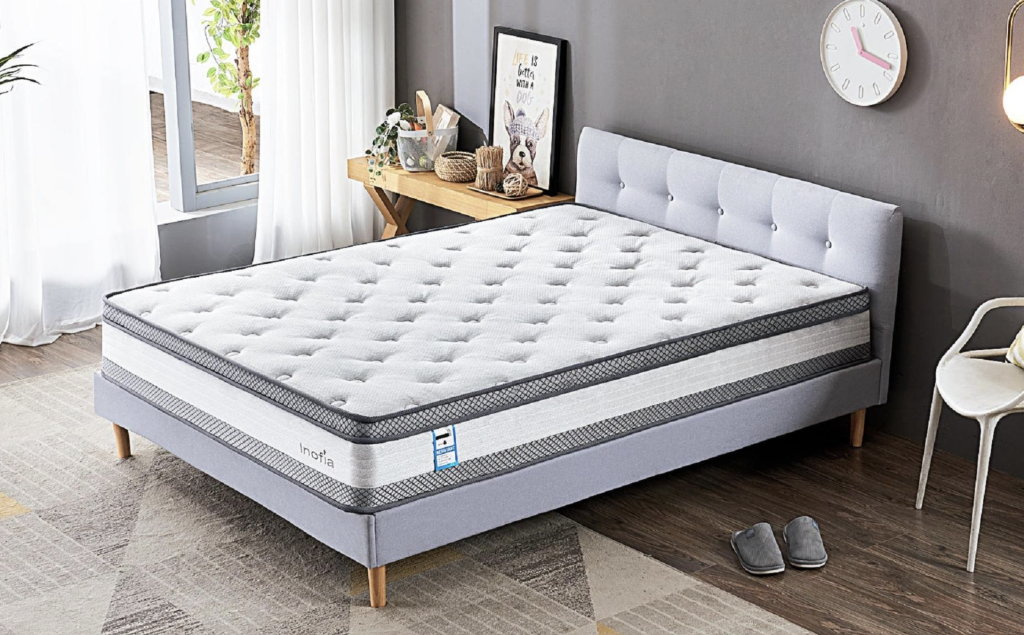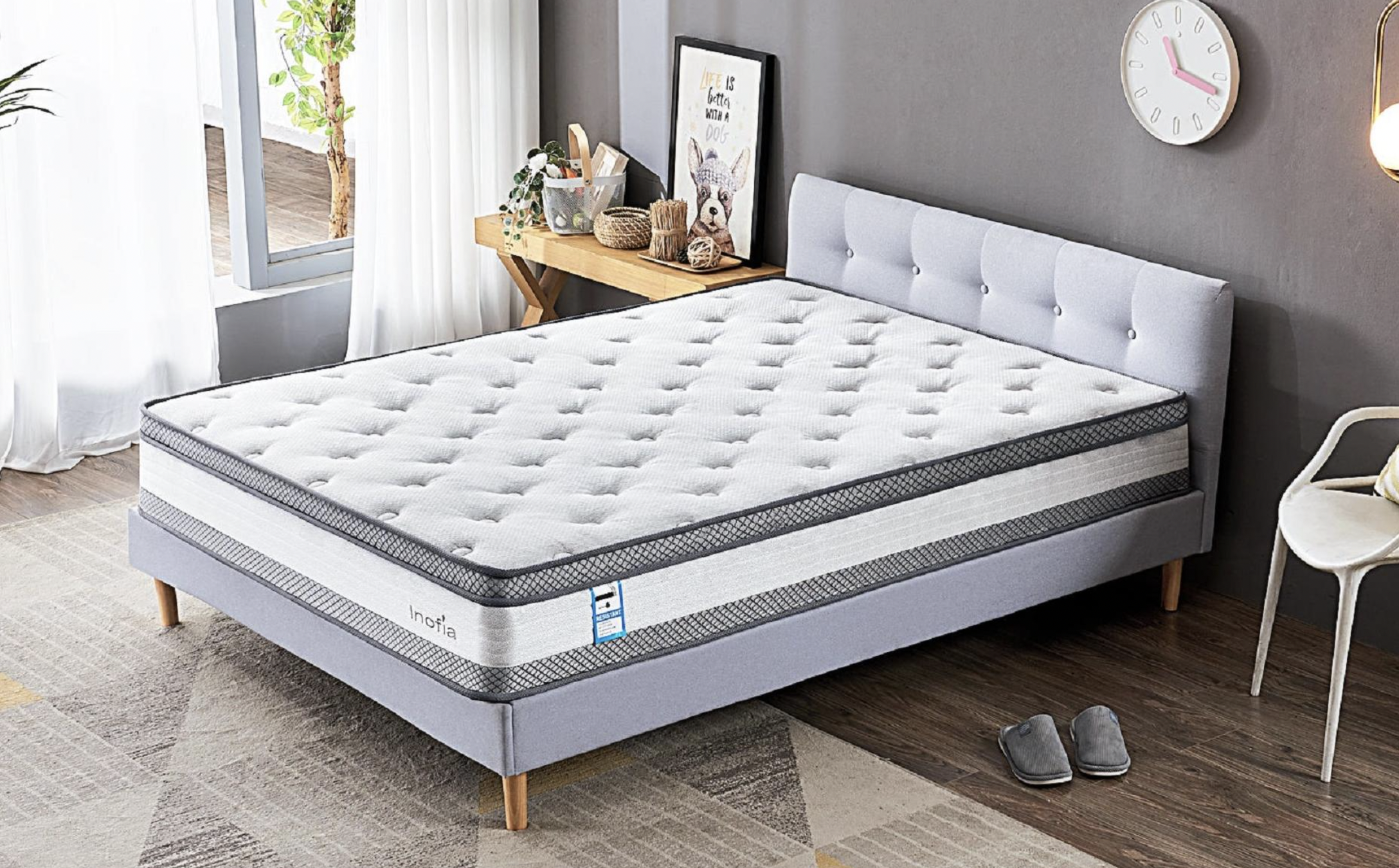Table

Hybrid mattresses have grown in popularity in recent years, offering a nice middle ground between the contouring feel of memory foam and the bounce of an innerspring. However, hybrid mattresses also come with some potential downsides that shoppers should be aware of.
First and foremost, hybrid mattresses tend to be more expensive than foam or innerspring mattresses alone. On average, expect to pay between $1,200-$2,000 for a quality hybrid queen mattress from a reputable brand. The combination of materials drives up costs compared to a basic foam or spring mattress.
Hybrids also tend to be heavier and bulkier to ship due to the coil system.
Additionally, some hybrids may still sleep a bit warm due to the foam comfort layer. However, they tend to sleep cooler than all-foam mattresses overall.
There is also slightly more motion transfer potential with hybrids compared to all-foam, though less than a traditional innerspring.
And hybrids produce some noise when bearing weight, though less than innersprings.
In summary, the main potential negatives of a hybrid mattress include the higher average costs, weight, potential heat retention, and noise potential. However, hybrids offer a nice balance between foam and innerspring feels that can suit many sleepers’ preferences. Shoppers should weigh the pros and cons against their needs.
Negatives of a Hybrid Mattress
More Expensive Than Foam or Innerspring Mattresses
On average, expect to pay between $1,200-$2,000 for a quality hybrid queen mattress from a reputable brand. The combination of materials drives up costs compared to a basic foam or spring mattress. Hybrids also tend to be heavier and bulkier to ship due to the coil system.
Heavier and Bulkier Than Other Mattress Types
The coil system in a hybrid mattress makes it much heavier and bulkier than a foam or innerspring mattress. This makes hybrids harder to move and ship. Most hybrids require at least two people for setup.
May Still Trap Some Heat
While hybrids sleep cooler than all-foam beds, some may still sleep a bit warm due to the foam comfort layer. However, they tend to sleep cooler than memory foam mattresses overall.
Slightly More Motion Transfer Potential
Hybrids have more motion transfer than all-foam mattresses due to the coils. However, they isolate motion better than a traditional innerspring.
May Make Some Noise
The coils in a hybrid mattress can make some noise when bearing weight, though less noise than innersprings typically do.
Lack of Flippability
Hybrid mattresses cannot be flipped, only rotated, due to the designed top and bottom layers. Innerspring mattresses are often flippable.
May Not Suit Those Wanting a Pure Foam or Innerspring Feel
Some sleepers strongly prefer the feel of either foam or springs. Hybrids offer a middle ground that may not work for those with strong preferences.In summary, the main downsides of hybrid mattresses are the higher cost, weight, potential heat retention, and lack of flippability. However, hybrids offer a nice balance between foam and innerspring feels that can suit many sleepers’ preferences.
Conclusion
In summary, hybrid mattresses offer a nice middle ground between the contouring feel of memory foam and the bounce of an innerspring. However, they also come with some potential downsides to be aware of.The main negatives of hybrid mattresses include their higher average costs, heavier weight, potential heat retention, and lack of flippability.
Specifically, expect to pay $1,200-$2,000 for a quality hybrid queen from a reputable brand. The combination of foam and coils makes hybrids heavier to move and ship than foam or innerspring alone. Some hybrids may sleep a bit warm due to the foam layer, though cooler than all-foam.
And hybrids cannot be flipped, only rotated, due to their designed layers.There is also slightly more motion transfer with hybrids compared to all-foam, and they can produce some noise when bearing weight. Finally, hybrids may not suit sleepers who strongly prefer the feel of either pure foam or springs.
Overall, hybrid mattresses are not necessarily the best choice for every sleeper. Consider your budget, preferences for foam vs. springs, temperature needs, ease of moving, and whether you want flippability. Weigh the potential negatives against the benefits of a hybrid’s blended feel. And test out hybrids in person when possible before making a purchase. With some comparison shopping, you can likely find a quality hybrid that suits your needs and preferences.
FAQ Negatives of a Hybrid Mattress
1. What is a hybrid mattress?
A hybrid mattress is a type of mattress that combines the benefits of a traditional innerspring mattress with a foam comfort layer. It typically consists of pocket coils or innerspring coils as the support system, with a layer of memory foam, latex, or another type of foam on top.
2. What are the negatives of a hybrid mattress?
While hybrid mattresses have their advantages, there are some potential downsides to consider. One of the main drawbacks is that they tend to be more expensive compared to traditional innerspring or foam mattresses. Additionally, hybrids may not provide as much motion isolation as pure foam mattresses, which can be a concern for couples who are easily disturbed by their partner’s movements during sleep.
3. Do hybrid mattresses sleep hot?
Due to the combination of foam and innerspring coils, hybrid mattresses may retain more heat than pure foam mattresses. However, the extent to which they sleep hot can vary depending on the specific materials used and the individual’s personal preferences. If you are a hot sleeper, it’s advisable to choose a hybrid mattress with cooling features or opt for a mattress that focuses more on foam comfort layers than traditional coils.
4. What are the cons of memory foam in a hybrid mattress?
Although memory foam is known for its pressure-relieving properties, it also has some downsides. Memory foam mattresses tend to retain body heat, which can result in a warmer sleeping surface. Additionally, memory foam may have a slight off-gassing smell when first unpacked, although this odor typically dissipates within a few days.
5. Are there any disadvantages to hybrid mattresses?
Hybrid mattresses, like any other type of mattress, have their cons. Some people may find that hybrids do not provide enough edge support compared to pure innerspring mattresses. Additionally, the overall feel of a hybrid mattress may not suit everyone’s preferences, especially those who prefer a firmer or softer sleep surface.
6. Can a hybrid mattress be the best choice for me?
The suitability of a hybrid mattress depends on individual sleep preferences and needs. Hybrids can combine the best of both worlds by offering the support of innerspring coils and the comfort of foam layers. However, if you have specific requirements such as motion isolation, pressure point relief, or a particular sleep position, it’s essential to carefully consider the
Mattress Buzz is reader supported. When you buy a product through our links we may earn an affiliate commission.

